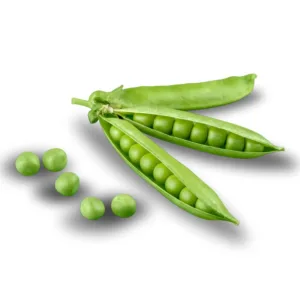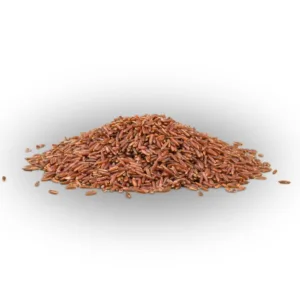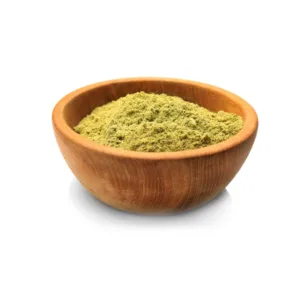The world of protein supplements is no longer dominated by whey and casein. As more people embrace plant-based diets for health, ethical, or environmental reasons, the demand for vegan and vegetarian protein powders has skyrocketed. And it’s not just vegans and vegetarians who are turning to these options – athletes, fitness enthusiasts, and health-conscious individuals are also recognizing the benefits of plant-based protein.
This comprehensive guide will explore the diverse landscape of plant-based protein powders, providing you with an in-depth look at popular sources like soy, pea, brown rice, and hemp, along with other emerging options.
We’ll delve into their nutritional profiles, benefits, potential drawbacks, and the importance of complete protein and amino acid profiles. By the end, you’ll be well-equipped to choose the best plant-based protein powder to support your individual needs and goals.

Table of Contents
- Why Choose Plant-Based Protein Powders?
- Exploring the World of Plant-Based Protein Sources
- Other Plant-Based Protein Sources: Expanding the Options
- The Importance of Complete Protein and Amino Acid Profiles
- How to Ensure a Complete Amino Acid Profile with Plant-Based Protein Powders:
- Choosing the Best Plant-Based Protein Powder for You:
- Conclusion: Embracing the Power of Plant-Based Protein
Why Choose Plant-Based Protein Powders?
Plant-based protein powders offer a compelling alternative to animal-derived options for a variety of reasons:
Exploring the World of Plant-Based Protein Sources
The variety of plant-based protein powders available today can be overwhelming. Let’s break down some of the most popular and emerging options:
1. Soy Protein: The Complete Plant-Based Powerhouse

-
- Complete Protein Status: Soy is one of the few plant sources that is considered a complete protein, meaning it contains all nine essential amino acids in adequate amounts. Amino acids are the building blocks of protein, and essential amino acids are those that the body cannot produce on its own and must be obtained from food.
-
-
- Muscle Building: Soy protein has been shown to be effective for building and maintaining muscle mass, comparable in some studies to whey protein.
- Heart Health: Soy protein may help lower LDL (“bad”) cholesterol levels, contributing to improved heart health.
- Rich in Nutrients: Soybeans are a good source of iron, calcium, and isoflavones (plant compounds with potential health benefits).
-
-
-
- Allergies: Soy is a common allergen, so individuals with soy allergies must avoid it.
- Phytoestrogens: Soy contains isoflavones, which are phytoestrogens (plant estrogens). While generally safe for most people, there has been some debate about their potential effects on hormone levels, particularly in men. However, most research suggests that moderate soy consumption is not a cause for concern.
- GMOs: Many soybeans are genetically modified (GMO). If this is a concern, look for non-GMO or organic soy protein.
-
-
-
- Soy Protein Isolate: The most common form, containing 90% or more protein, with most of the fat and carbohydrates removed.
- Soy Protein Concentrate: Contains around 70% protein, with more carbohydrates and fat than isolate.
-
2. Pea Protein: The Hypoallergenic, Iron-Rich Option

-
- Hypoallergenic: Pea protein is naturally free of common allergens like dairy, soy, gluten, and nuts, making it a great choice for individuals with food sensitivities.
- Iron Content: Pea protein is a good source of iron, a mineral that’s important for oxygen transport and energy production.
- Incomplete Protein: Pea protein is relatively low in the amino acid methionine, making it an incomplete protein on its own. However, when combined with other plant proteins like brown rice, it can create a complete amino acid profile. It’s often paired with brown rice protein in blends.
- Texture: Pea protein can sometimes have a slightly earthy or beany flavor, though many brands have developed methods to minimize this.
-
-
- Muscle Growth: Studies show that pea protein can support muscle growth similarly to whey protein when combined with resistance training.
- Satiety: Pea protein is digested relatively slowly, which can help promote feelings of fullness.
- Easily Digested: Pea protein is generally well-tolerated and easy on the stomach.
-
3. Brown Rice Protein: The Gentle, Gluten-Free Grain

-
- Gluten-Free and Hypoallergenic: Like pea protein, brown rice protein is naturally gluten-free and hypoallergenic.
- Gentle on the Stomach: Brown rice protein is known for being easily digestible and gentle on the stomach.
- Incomplete Protein: Brown rice protein is low in the amino acid lysine. Therefore, it is typically considered an incomplete protein.
- Often Combined with Other Proteins: To create a complete amino acid profile, brown rice protein is often combined with pea protein. Pea protein is a good source of lysine, while brown rice protein is higher in methionine. The combination complements each other well.
-
-
- Supports Muscle Growth: Studies have shown that brown rice protein can be effective for building muscle when combined with resistance training.
- Good for Sensitive Stomachs: Its gentle nature makes it a good option for those with digestive issues.
-
4. Hemp Protein: The Fiber and Omega-3 All-Star

-
- Fiber Content: Hemp protein is a good source of fiber, which is important for digestive health and can aid in weight management.
- Omega-3 Fatty Acids: Hemp seeds are rich in omega-3 fatty acids, which have anti-inflammatory properties and are beneficial for heart health.
- Incomplete Protein: While hemp protein contains all nine essential amino acids, it’s relatively low in lysine, making it an incomplete protein.
- Taste and Texture: Hemp protein has a distinct earthy, nutty flavor that some people enjoy while others find less appealing.
-
-
- Digestive Health: The fiber content supports healthy digestion.
- Heart Health: The omega-3 fatty acids contribute to cardiovascular health.
- Unique Nutritional Profile: Offers a combination of protein, fiber, and healthy fats.
-
Other Plant-Based Protein Sources: Expanding the Options
Beyond the most common options, a variety of other plant-based protein powders are gaining popularity:
1. Pumpkin Seed Protein:
-
-
- Source: Made from ground pumpkin seeds.
- Benefits: Good source of zinc, magnesium, and iron. Contains healthy fats and antioxidants.
- Incomplete Protein: Should be combined with other protein sources to ensure a complete amino acid profile.
-
2. Sunflower Seed Protein:
-
-
- Source: Made from ground sunflower seeds.
- Benefits: Contains vitamins E and B, selenium, and magnesium. Offers a mild, nutty flavor.
- Incomplete Protein: Combine with other protein sources for a complete amino acid profile.
-
3. Chia Seed Protein:
-
-
- Source: Made from ground chia seeds.
- Benefits: Excellent source of fiber and omega-3 fatty acids.
- Incomplete Protein: Combine with other protein sources.
-
4. Quinoa Protein:
-
-
- Source: Derived from the ancient grain quinoa.
- Benefits: Closer to a complete protein than many other plant sources, but still may benefit from being paired with other proteins. Good source of fiber and iron.
- Complete Protein: While sometimes marketed as complete, it is ideal to pair it with other proteins.
-
5. Sacha Inchi Protein:
-
-
- Source: Made from the seeds of the sacha inchi plant, native to South America.
- Benefits: Contains omega-3, omega-6, and omega-9 fatty acids. Rich in vitamin E.
- Incomplete Protein: Combine with other protein sources.
-
The Importance of Complete Protein and Amino Acid Profiles
When choosing a plant-based protein powder, it’s essential to understand the concept of complete protein and amino acid profiles.
How to Ensure a Complete Amino Acid Profile with Plant-Based Protein Powders:
Choosing the Best Plant-Based Protein Powder for You:
With the vast array of options available, selecting the right plant-based protein powder can feel overwhelming. Here’s a step-by-step guide to help you make an informed decision:
-
-
- Look for: Minimal ingredients, recognizable protein sources, added nutrients like fiber, vitamins, and minerals.
- Limit or Avoid: Artificial sweeteners, flavors, and colors; excessive added sugars; fillers and thickeners (like carrageenan); and a long list of unrecognizable ingredients.
-

Conclusion: Embracing the Power of Plant-Based Protein
Plant-based protein powders offer a sustainable, ethical, and healthy way to supplement your protein intake, whether you follow a vegan or vegetarian diet or are simply looking to diversify your protein sources.
From the complete protein power of soy to the hypoallergenic benefits of pea and the unique nutritional profile of hemp, the options are diverse and cater to a wide range of needs and preferences.
By understanding the different types of plant-based proteins, their amino acid profiles, and the importance of choosing high-quality products, you can confidently select a protein powder that aligns with your goals and supports your overall health.
Remember that plant-based protein powders are most effective when combined with a balanced diet and a healthy lifestyle. Embrace the power of plants and discover how these protein sources can help you thrive!

Leave a Reply